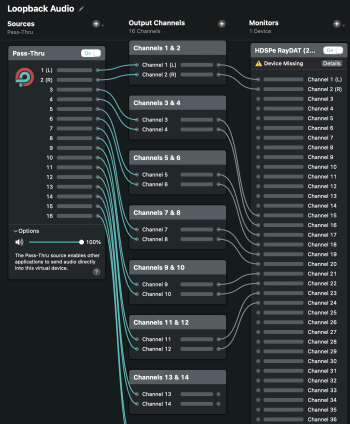Does anyone have any audio setup expertise with Dolby Atmos playback.
I use an RME device that shows in the Audio Devices setup as 36 in/36 out. From my understanding when you launch the Music App it checks with the Audio Device that is set to output how many channels its has. And for some reason if it sees more than 16 it reverts to 5.1 instead of 7.1.4
I got around this by using a third party app called Loopback to create a 16 virtual Audio Device.
Oddly if I switch to my RME without closing the Music App it continues to play correctly directly to the hardware, until I relaunch the Music App and it reverts back to 5.1
Here is a video demonstrating the behaviour
I use an RME device that shows in the Audio Devices setup as 36 in/36 out. From my understanding when you launch the Music App it checks with the Audio Device that is set to output how many channels its has. And for some reason if it sees more than 16 it reverts to 5.1 instead of 7.1.4
I got around this by using a third party app called Loopback to create a 16 virtual Audio Device.
Oddly if I switch to my RME without closing the Music App it continues to play correctly directly to the hardware, until I relaunch the Music App and it reverts back to 5.1
Here is a video demonstrating the behaviour


